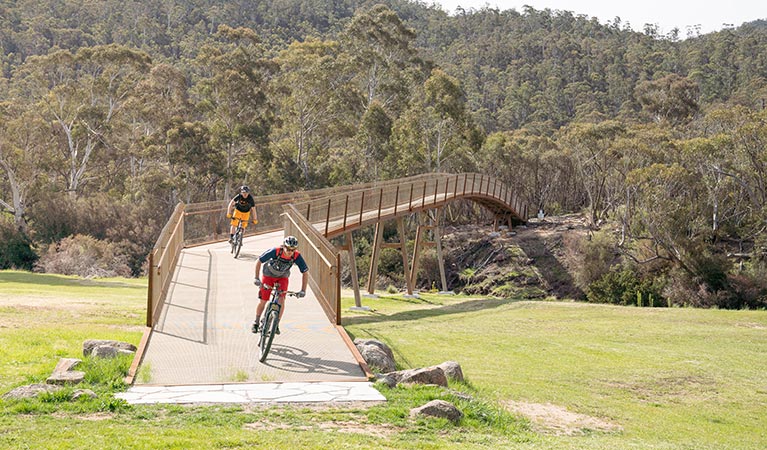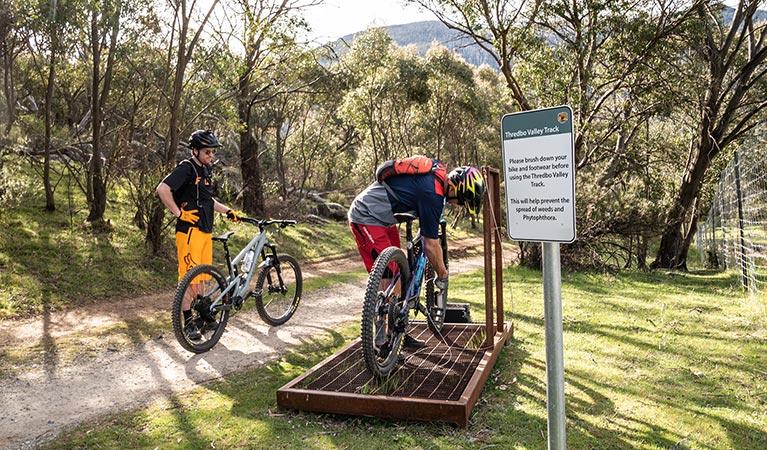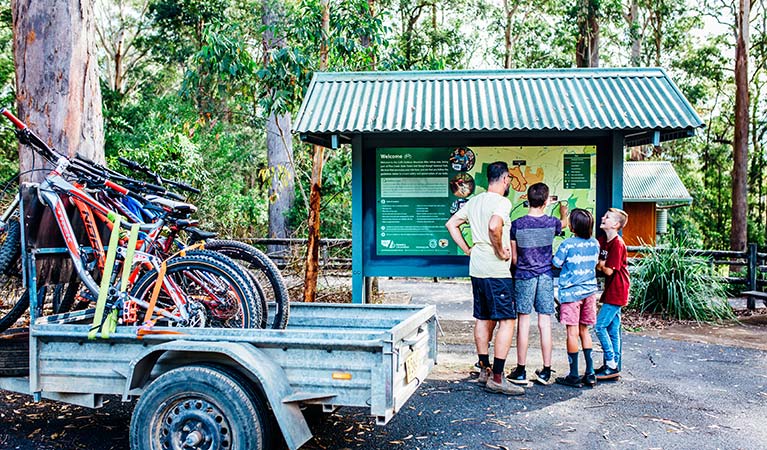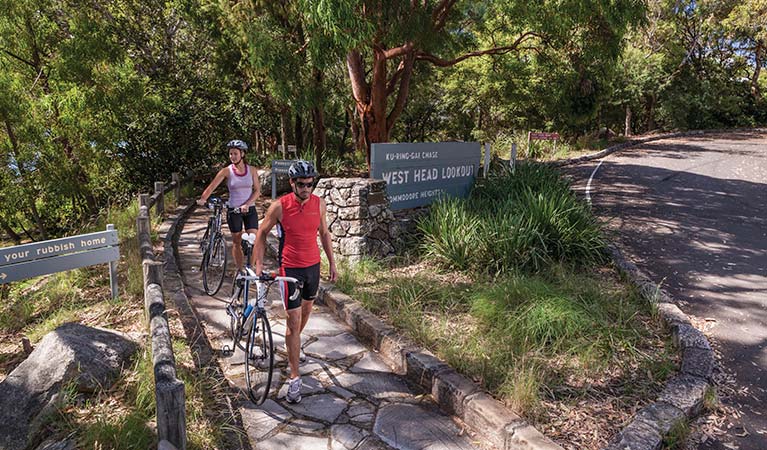Mountain biking and cycling safety
Going mountain biking or cycling in NSW national parks? Get out and enjoy it—just be prepared for all conditions and ride safely and responsibly.
Plan your bike ride
- Check for approved cycling trails near you.
- Check the difficulty level, length and time. Make sure every rider in the group understands the route and is comfortable with the level.
- To avoid damaging tracks and your bike, defer your ride if it has been raining.
- Plan extra time into your bike ride in case you need to do bike repairs or treat injuries.
- You need a clean bike to stop the spread of weeds and soil pathogens.
- Check if there are any park alerts or closures before you go and check the weather forecast.
- To avoid carrying unnecessary weight, coordinate with your riding group to share some gear. For example, a bike repair kit or first aid kit.
- Check your bike before you leave. This includes tyres, brakes and chain.
Tell somebody
Give your route details to family and friends who are not riding with you. Tell them when you expect to return and let them know when you have returned. For longer trips, consider filling out a trip intention form.
Stay on marked trails
Stay on existing signposted trails and don’t create new ones. Bikes are not permitted on walking tracks or in wilderness areas and nature reserves (except where signposted). Many NSW national parks operate a ‘no sign, no ride’ policy.
Ride safely
- Ride through standing water, not around it.
- On multi-use trails, cyclists must give way to walkers and horses. Take extra care around horses—they startle easily. Consider completely stopping and let the horse and rider pass by.
- Be considerate of beginner and slower riders, including children.
- Let people know you’re coming. Ring your bell or call out.
- Say hello to other trail users to foster positive attitudes between riders and walkers.
- Slow down to a walking pace or even stop when passing others.
- Take regular short breaks to rehydrate and check how everyone in your group is going.
- Never frighten animals.
What to bring
Carry some of this gear securely on your bike to keep the weight off your back:
- At least 2L of water per person. You’ll need more for longer rides and warm days. Take more than you think you’ll need.
- Snacks to keep your energy levels up. And a bag to take your rubbish.
- Bike repair kit and pump.
- Lights in case it starts to get dark before you return.
- First aid kit suitably sized for carrying in backpack or cycle bags.
- Map and compass or GPS. Usually only in remote areas.
- Your mobile phone or a satellite phone. Download the Emergency Plus app.
- In remote areas, carry a Personal Locator Beacon (PLB) because you might not have mobile phone reception.
- A small backpack/hydration pack is generally required for a ride longer than a half day. To carry your phone, food, spares, rain jacket, water etc.
What to wear
- Australian standard approved helmet.
- Protective eyewear or sunglasses.
- Fabrics that wick away moisture and keep you insulated. Avoid cotton which dries slowly when wet.
- Windproof and waterproof clothing.
- Lightweight layers in case you get too hot or too cold through changing conditions.
- Gloves and pads (for mountain biking).
- Comfortable enclosed shoes or bike shoes.
- Sunscreen
- Insect repellent
Ride lightly to care for parks
Caring for the environment brings joy to everyone. How can cyclists do their bit to leave no trace? Be sensitive to the dirt beneath you. Don’t skid, cut corners, form new trails or ride when it’s wet or muddy. Learn more about ways to tread lightly when cycling in NSW national parks.




